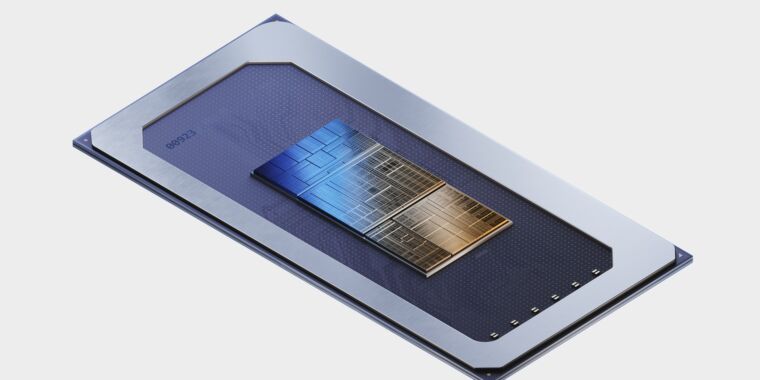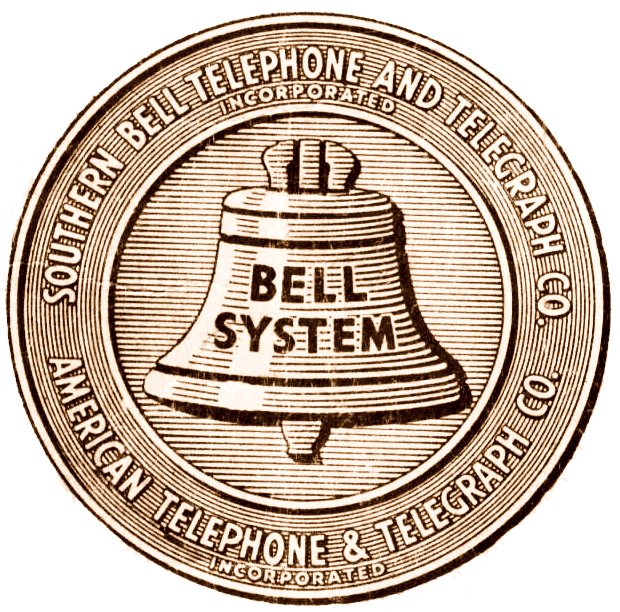Intel doesn’t think that Arm CPUs will make a dent in the laptop market::“They’ve been relegated to pretty insignificant roles in the PC business.”
Intel is finally innovating because of increased pressure. Don’t let the Pat Gelsinger’s calm tone fool you, he knows exactly what the competition is bringing. Apple has proven what Linux users have known for a few years, the CPU architecture is not as directly tied to the software as it once was. It doesn’t matter if it’s x86, ARM, or RISC-V. As long as we have native builds (or a powerful compatibility layer) it’s going to be business as usual.
the CPU architecture is not as directly tied to the software as it once was
Yeah it used to be that emulating anything all would be slow as balls. These days, as long as you have a native browser you’re halfway there, then 90% of native software will emulate without the user noticing since it doesn’t need much power at all, and you just need to entice stuff that really needs power (Photoshop etc), half of which is already ARM-ready since it supports Macs.
The big wrench in switching to ARM will be games. Game developers are very stubborn, see how all games stopped working on Mac when Apple dropped 32-bit support, even though no Macs have been 32-bit for a decade.
Even AMD showed just how power hungry and thermal inefficient intel generally is
As Arm develops more every year, laptop OEMs will eventually switch just because of the insane power and thermal benefit.
I hope RISC-V gets its chance to shine too
deleted by creator
Aye exactly, Apple’s marketing, which is often basically lying, has a lot to answer for in the prevelence of this idea. They’d have you believe that they’re making chips with 14 billion percent more performance per watt and class beating performance. Whereas in reality they’re very much going toe to toe with AMD and other high end ARM chip vendors
Every vendor is guilty of doing this not just apple, even AMD. The fact is apple found a way to make desktop arm chips accessible and viable. If you’ve ever used an m1 or m2 Mac, you’ll understand how big of an impact they’ve made. My m1 Mac mini 8gb could run several games above 60fps at 1440p at reasonable settings, examples being WoW (retail with upgraded graphics), LoL and DotA2, StarCraft 2, diablo 3, etc. It was and still is a very capable chip.
Don’t agree with this. I have the newest 7840U that’s supposed to be THE answer to the M2. Performance per watt and battery life is way worse.
deleted by creator
Yoga slim 6
RISCV is going to be huge, but it will take at least another decade for performance version to catch up with Intel and ARM. Hopefully by that time we know how to deal with architecture changes in consumer gear because of the ARM switch and can just painlessly move over.
Intel is doing all the things dying companies do.
I hope I’m wrong about this, but I don’t think I am.
Under previous non-technical CEOs Intel lost it’s focus on innovation leadership and became a commodity supplier, losing ground to AMD and NVIDIA. Pat Gelsinger is different, he’s an engineer, he led the 486 program, he is committed to regaining technical leadership and compete with TSMC as a foundry player. The Intel 4 node is now in mass production, Intel 3, 20A and 18A will follow in the next 2 years. New foundry capacity is being added in every factory, and new sites are being developed, 10’s of billions of investment, None-core business units are being divested. 15th generation processors with be AI native, the plan is that in the same way as Centrino kick started WiFi, AI support on the desktop will be a game changer.
Are these things that dying companies do?
Spend money they don’t have in a last ditch attempt to hit the right buzz words and turn things around for real this time? Yes. That’s exactly what they do.
But then again, so do companies that have just hit a minor slump.
Let’s hope they manage to fix things. I don’t like TSMCs monopoly position right now.
Will Intel exist in 2026? NVIDIA and AMD are making ARM chips for 2025, China is investing heavily in RISC-V, and AMD already released a CPU that rivals Apple’s M2 which is x86. Who knows how things will turn out once they release an ARM chip.
Things are shaping up to become an NVIDIA vs AMD arms race with some Chinese company becoming a dark horse and announcing a RISC-V chip in 2-3 years.
There was a company that announced a major technological advancement in chip fabrication in the US, but I can’t remember who or what it was. My maggot brain thinks something with light-based chips or something? I dunno… that might also be something to look out for
Edit: it was intel: Intel Demos 8-Core, 528-Thread PIUMA Chip with 1 TB/s Silicon Photonics
It will take at least another 10 years to get a majority of the market off of x86 with the 20+ years of legacy software bound to it. Not to mention all of the current gen x86 CPUs that will still be usable 10 years from now.
Honestly, we just need some sort of compatibility layer. Direct porting isn’t completely required yet.
So, like Rosetta? 🙄
I think it’s safe to say Apple has proved that wrong three times.
When they switched from Motorola to Power, then from Power to Intel, and latest from Intel to Arm.
If necessary software will be quickly modified, or it will run well enough on compatibility layers.The switch can happen very fast for new hardware. The old systems may stay around for a while, but the previous CPU architecture can be fazed out very quickly in new systems. Apple has proven that.
Apples advantage is that it controls the whole stack from silicon to App Store. That’s a problem for all sorts of reasons, but here they can use that power to implement the shift in a way that minimally impact the users.
Keep in mind that M1 it’s not just an ARM CPU. It’s an ARM CPU that has specially designed features that make Intel compatibility fast. Rosetta 2 is a marvel of technology, but it would run like crap on anything that does not have Intel memory model emulation in hardware.
If you are in a position where
- Old binaries have to keep running indefinitely (ie the entire windows market) and
- You have to buy regular ARM chips from a regular supplier without special x86 emulation support features
things are looking quite a bit less rosy for you.
from silicon to App Store.
Not ther case from Motorola to Power or Power to X86. Very similar software infrastructure to what PC’s have, with lots and lots of 3rd party software vendors.
I’m not sure about that. If for example the EU says “for the environment, you may not use chips that use X watts/Ghz” or something, x86 might be out of the game pretty quickly. Also, becoming market leader doesn’t mean old hardware, it’s the new hardware. I bet by 2030, the majority of chipsets sold will be either ARM or RISC-V. AMD did make an ARM rival with the 7840U, but with their entry in to ARM in 2025, it’s not preposterous to believe the ARM ecosystem will pick up steam.
Also, recompiling opensource stuff for ARM is probably not going to be a huge issue. clang and gcc already support ARM as a compilation target, and unless there’s x86 specific code in python or ruby interpreters, UI frameworks like Qt and GTK, they should be able to be compiled without much issue. If proprietary code can’t keep up or won’t keep up, the most likely outcome will be x86 emulators or the dumping of money into QEMU or stuff like Rosetta for windows.
Anyway, I’m talking out of my ass here as I don’t write C/C++ and don’t have to deal with cross-compilation, nor do I have any experience in hardware. It’s all just a feeling.
deleted by creator
i think its neet how geopolitically this is all connected to the taiwan issue and only when the mainland can make chips as good as NvDia in taiwain will they be able to economically handle the invasion
if they invade today gpus and cpus prices explode into dumbdum levels for a few years bro it wouod suck for the whole world
ARM just makes sense for portable devices for obvious reasons, x86 isn’t dying though. For the average person who needs a laptop to do some professional-managerial work ARM is perfect.
What are those reasons that you think are so obvious? I have no idea what you could be referring to 😅
ARM is more efficient and as a “system on chip” reduces the need for as many other components on the boards, phones for example. Unless you’re doing heavy cpu or gpu intensive tasks there’s a bunch of upsides and no downsides to ARM.
That’s my impression as well. I’m confused about the “just”. There’s many non-portable devices that don’t have too heavy workloads and that I’d think would benefit from better energy efficiency.
Oh yeah the article is about the laptop market, but of course all sort of non-portable devices run on non-x86 platform. I’d even say x86 is the minority unless you reduce it to just desktop workstations.
Arm tends to be a lot more power efficient, so you can get better battery life on portable devices.
And lower power consumption and heat production on all devices, so I don’t get the “just”
Not only that but also reducing the number of chips that need to be powered helps with efficiency.
There is also a sizable market for laptops that do not do much more than log onto a remote desktop. Especially with remote working, that has becomes the perfect middle ground between security, cost, and ease of use. A cheap ARM processor would work perfectly for those machines.
I’m a sysadmin and would much rather have a light arm machine to remote in from than a standard Intel laptop.
Non x86 has been tried at least twice before on windows and failed. While this is certainly the best attempt yet, there is no guarantee of success. Sure would be nice however to get more competition.
The main difference is that Alpha and Itanium came from the high end, where they struggled with low quantities, horrible yields and poor economies of scale.
ARM comes in from the low end, and suddenly the shoe is the other foot. There are more ARM processors in use right now than the number of x86 processors that were ever made in the entire history of computing. They are cheap, they are power efficient, they are everything the market screams for.
The writing is on the wall if Intel doesn’t get its ass in gear and gets substantially better very quickly. Maybe not today, maybe not tomorrow, but best case they will remain the king of a shrinking, increasingly irrelevant market until they are acquired.
I was referring to arm and other risc cpus Microsoft has tried before. This is Microsoft’s 3rd attempt with arm. The NT in Windows NT literally is a reference to a RISC chip.
NT launched on a bunch of chips, many of them what we would call RISC today. As far as I can tell it was not intended to displace x86, merely to take advantage of the hardware of the 386+ chips and complement the Intel offering with other OEMs.
Windows NT 3.1 was released for Intel x86 PC compatible, PC-98, DEC Alpha, and ARC-compliant MIPS platforms. Windows NT 3.51 added support for the PowerPC processor in 1995
Alpha (also RISC) was a hot item back in the day, which is why I mentioned it explicitly.
Arm was not part of the deal at the time, but was added later starting with the surface tablets. I have not been counting, but I have no trouble believing it’s the third attempt since surface RT.
1 - laptops usually ship windows out of the box 2 - windows ARM has some trouble due to partnerships 3 - not all apps will have equal parity between older arch to ARMs
Changes are bound to happen. They don’t want to pay for the ARMs fees probably. And if they don’t bring something at Apple Silicon level, it would be an issue to intel: Intel giant producer of CPUs Apple new to laptop/desktop grade cpu designs Kinda shameful
People are going to start to wonder what they have all the Windows OS for when all they do is run a browser. If someone makes a less hassle Linux distro…that runs well on Arm… Well we could finally have some advancement in mobile computing. ChromeOS was almost it but Google made it all cloud and Google only.
If you say browser only, then you are relegating to the cloud, no? Is then Google not doing things right?
reminds me of “In the world, there is space for 5 computers” or something along those lines
ARM is dead. Anecdotally, apple has the longest history of any company hitching to dead architectures (6502, 68k. Power PC, etc.). The only architecture that apple has hitched to that didn’t totally die is x86, and x86 will die soon to RISC-V. Why would anyone pay royalties to be controlled by ARM when an open alternative exists. RISC-V is the new future that all the old guard are trying their best to delay as long as possible. ARM was sold by the original owners the second RISC-V overcame its major legal hurdles. The new owners are trying to pump as much as possible to minimize their losses in the public stock exchange. Anyone with an ounce of sense can look at the timeline of RISC-V and the sale of ARM to see the real picture without fanboi nonsense.
RISC-V is still not going to take over x86 for quite a while. As much as I’d love for it to, it’s still going to take some work.
Give it about 8-10 years and I think that’s when x86 is going to be out the window, and will be an architecture delegated solely for enthusiasts.
Id say more like 20-40 years. x86 won’t die that easily
I agree it will take awhile to completely take over even the low end market, but like there is already a data center running on RISC-V that was in the news cycle a month or two back. Intel has been putting a lot of money into it too because they know the change is coming. We are on the edge of a major shift needed for AI anyways. I think that will be the death knell for x86. The memory and cache bus structures need to change to accommodate tensor math much more efficiently. Why restructure the dying x86 so substantially when it could be done in RISC-V and make most hardware antiquated at the same time to finance the bleeding edge shift. I think The big players will still be on top, except ARM will fade into irrelevance like MIPS. Proprietary/planned obsolescence/exploitation in the digital landscape is a major problem that needs to go away. All the relevant companies have access to reverse engineered hardware from their competitors. Proprietary only exists to exploit end users. RISC-V is a small step in the right direction of restoring the right to fundamental ownership.
RISC-V is about 5-10yrs behind the performance of ARM. If ARM continues to improve it may never catch up.
I agree on the time line.
RISCV has to completely slaughter ARM in the uC and SBC arenas before it can be a serious contender for the desktop market.
Basically, RISCV’s selling point is that it’s royalty free. Anyone can implement it without paying anything to anyone, no NDA’s nothing. In the uC market, where chips cost a fraction of a dollar in quantity and margins are practically non existent, not paying the ARM tax makes a HUGE difference.
Once they take over the uC market, it can move up, leveraging the experience the experience of being the world most popular core into more beefy SoCs. This is your raspberry pi equivalents and your budget phones.
From there, you can add performance features and move up to tablets, flagship phones and low power laptops. And then, eventually, performance laptops, desktop machines and servers.
This will take at least a decade.
This is not how ISA, fab nodes, or hardware design work at all. ARM is not special. It was just a company that made it easier to put together a bunch of processor blocks and peripherals for a fee and royalty. It was just a convince thing for the trailing edge. Everything ARM can do RISC-V can do as far as ISA. No one is going to pay a royalty when the same thing is free. This is the realm of big money where the choice is obvious. Not to mention, we are on the final node already when it comes to scaling, the progress of the last 40 years has stopped. There is potential in new technologies like computing with light, but silicon lithography will never drop below 3-5 nanometers because that is the end of what physics allows with quantum tunneling effects. We will eventually move past the stone age of computing with silicon. Organic technology is the holy grail, but until a major shift is made, we are at the end of silicon progress despite what all the marketing fools hype and moan about. ARM has no where to go. The people that created it bailed ages ago because the writing was on the wall all the way back then.











